Carmakers in Europe, including Mercedes-Benz and Stellantis, are reshaping their logistics by localising supply chains. This strategic move aims to enhance efficiency, cut costs, and reduce emissions, marking a significant step towards sustainable electric vehicle production.
Across the globe, the drive to more localised production and supply continues, particularly in the battery supply chain for electric vehicles (EVs). Carmakers in Europe are structuring and designing their supply chains now, while the EV landscape is still evolving, so that their future supply chains will be more efficient, cost-effective and streamlined.
Both Mercedes-Benz and Stellantis are taking a comprehensive approach to their battery technology supply chains, from research and development (R&D) through raw materials to series production.
Supply chain restructuring
The batteries for Mercedes-Benz’s EQ EVs are supplied by a global battery production network, with factories on three continents. Local battery production is a key success factor for the carmaker’s electric offensive and it already produces batteries in Germany, both at Untertürkheim, in the Hedelfingen and Brühl parts of the complex, and Kamenz, Jawor in Poland. It is also making them at Tuscaloosa in the US, Beijing, China and Bangkok, Thailand. Further factories in Germany at Kölleda and Sindelfingen, and Kecskemét, Hungary have also been announced.
While Mercedes-Benz sources battery cells from different partners on the world market to increase access to the latest technologies, the carmaker recently moved to secure a localised raw materials procurement strategy, having struck a deal with lithium refiner Rock Tech in 2022. The refiner broke ground on a factory in Guben, Germany last year, which will supply the carmaker with material for its EVs produced in Europe. The battery cells will be supplied by Automotive Cells Company (ACC) in Europe, too, and the OEM has taken an equal stake with Stellantis and Total Energies in the venture. The partnership will allow the carmaker to develop and efficiently produce battery cells and modules in Europe that are tailor-made to the specific Mercedes-Benz requirements.
A spokesperson for the carmaker says the venture with ACC will allow Mercedes-Benz to build a “European battery champion with global ambitions”, adding: “We are increasingly pursuing the strategy of purchasing where we produce, reducing costs and risks, and enhancing sustainability.”
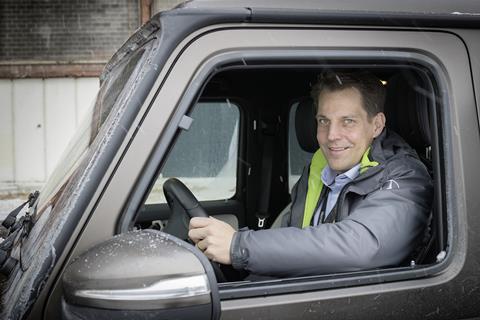
With in-depth know-how in the development and production of highly complex drive systems and the research and development expertise in the field of battery cells, Mercedes-Benz is involved with its suppliers in meeting the requisite specifications to ensure that a localised chain is formed – pushing the OEM’s ramp-up in EV production further and faster.
“The Mercedes-Benz procurement strategy is designed to ensure that in every major market sourcing and production are in close proximity,” says Gunnar Güthenke, head of procurement and supplier quality for Mercedes-Benz Cars. “This reduces our dependence on one particular region and enhances sustainability even amid geopolitical and macroeconomic uncertainty. Having a broad set of highly qualified partners in each market, as well as top-notch battery cell technologies, enables us to speed up our EV ramp-up.”
“The Mercedes-Benz procurement strategy is designed to ensure that in every major market sourcing and production are in close proximity” – Gunnar Güthenke, Mercedes-Benz Cars
The ACC JV: A model for European battery production
Stellantis is a partner with Mercedes-Benz and TotalEnergy division Saft in Automotive Cells Company (ACC). The move to take shares in the battery maker is part of Stellantis’ Dare Forward 2030 plan. The carmaker is aiming to be carbon net zero by 2038 throughout the entire supply chain and said that ACC’s new gigafactory in Billy-Berclau, Douvrin, France will help the OEM reach its goal of increasing battery manufacturing capacity to 250 GWh in Europe by 2030.
“When you decide to source something, you have to understand many things, such as cost structure, distance, logistics costs, and depending on what you supply you may have to understand tariffs involved,” says Maxime Picat, chief purchasing and supply chain officer, Stellantis.
The carmaker is building a supply chain around the gigafactory in Douvrin, with ACC planning to use a specialist warehouse in northern France for battery logistics. Logistics provider PSA BDP opened the 22,000 sq.m warehouse in Dunkirk, France in June last year, with the company stating it chose the northern France location because of the accelerating development of EV technology within the area. Douvrin is the first of three planned gigafactories in Europe, with two more planned for Italy and Germany and ACC is planning to ramp up localised supply even further. ACC’s CEO Yann Vincent said last year that moving more EV battery factories to Europe is a response to multiple challenges, including controlling the production chain, reducing the environmental impact of transporting batteries, and “helping to consolidate the European automotive industry in the face of global competition”.
With the EV supply chain, Picat says there are even more things to consider. In an ever-evolving environment, and with the potential for new rules and regulations about transporting batteries and battery materials, a localised supply chain has even more benefits. “Shipping raw material like lithium is completely different from shipping a plastic part. One of these days, the EU might say that batteries entering Europe will have to respect this law or that law. You have to map all of that.”
Back in November, Stellantis also signed a non-binding memorandum of understanding (MoU) with Chinese battery manufacturer CATL for the local supply of lithium-iron-phosphate (LFP) battery cells and modules to power its European EV production. The two firms are also considering the possibility of forming a 50/50 joint venture to identify further opportunities to strengthen a localised battery value chain.

Local for local
Alongside reducing cost and emissions, localising the supply chain can also reduce risk by securing raw materials more directly, which is something of which Mercedes-Benz is taking advantage.
“To prevent the risks of global supply chain interruptions, Mercedes-Benz focuses on a local-for-local approach with several suppliers,” the OEM’s spokesperson says. “This is intended to supply the regions independently of each other, knowing that raw material deposits are limited in some regions, including Europe. Nevertheless, we see this as an opportunity to reduce dependencies by diversifying our sourcing strategy.”
The company says, moreover, that environmental aspects are of particular importance. By building long-term and sustainable partnerships with raw material providers Mercedes-Benz has a strong lever to address its sustainability standards directly in the deeper supply chain.”
“The decision of localisation depends a lot on whether there is a cost impact to source far away or not, and on whether you’ve got competitiveness” – Maxime Picat, Stellantis
The carmaker’s long-term strategy is to secure raw material demands directly and indirectly to mitigate supply risks, including tapping new sources of raw materials and working with partners on concepts to significantly reduce the amount of raw materials per EV. Mercedes-Benz is focused on buying close to its production bases to increase this resilience further.
There are different models for the procurement of raw materials. Currently, Mercedes-Benz doesn’t source many raw materials directly, but says it regularly reviews all options. This includes exploring new ways to secure sustainable sources of raw materials to meet demand for scaled-up mass production of its EVs. The carmaker says it is diversifying the sourcing of its raw materials and is constantly screening the market for further suppliers.
“For us, the shift towards electric mobility also means a change in our supply chains,” says Güthenke. “Three goals are central to us: sustainability, raw materials supply resilience and competitive pricing. Mercedes-Benz is therefore diversifying its sourcing strategy and taking steps towards greater vertical integration in drive technologies for its electrification goals in key markets.”
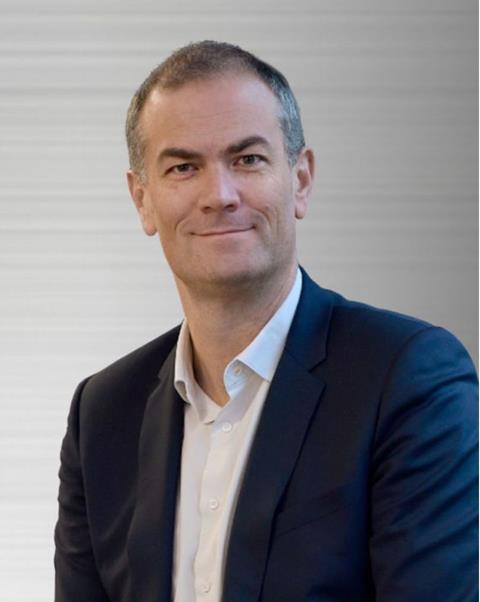
Commodity sourcing
Similarly, Stellantis’ Maxime Picat, says the benefits of localisation should be weighed up case-by-case for different commodities. “The decision of localisation depends a lot on whether there is a cost impact to source far away or not, and on whether you’ve got competitiveness,” he says. “That’s why you end up deciding to put your gigafactories in Europe, in France, Italy or Germany, because you understand the risks and also the impact of costs such as energy costs. You take all of these factors and you make your decision.”
As a consequence, sometimes Stellantis will continue to source material from wherever it is in the world if it is competitive, whereas with another commodity or raw material is sourced closer.
On top of this, Stellantis is investing into mines so that it has more control of the sourcing of raw materials, such as cathode active material (CAM), pre-CAM, lithium, cobalt and manganese. Stellantis previously did similar with the materials used in internal combustion engine (ICE) vehicles and is using the same strategy now with EVs. It is establishing joint ventures on gigafactories and buying mines. “We are putting equity in mines to ensure that we have the full control of the cost [and] of the volumes that the mine is able to deliver. And then we just had to close the loop by securing the raw materials that go through the chain up to the battery,” Picat says.
Stellantis was buying palladium, rhodium and platinum for exhaust pipes and giving the materials to its suppliers to make the finished product and ship back. Now it is the same strategy for the batteries, building greater resilience into the EV supply chain.
Future-proofing supply chains through localisation
While the benefits of localisation are clear, it is more difficult to determine where specifically to localise a supply source, particularly an EV supply chain in Europe. As the continent has no legacy of lithium-ion battery production, and the battery supply chain is still in its infancy, it can be tricky to tell whether a region or country will be the next hotspot for EV production and logistics.
For Stellantis, the solution is simple; don’t fix what isn’t broken. The carmaker already has ICE plants scattered across the continent and trusted suppliers and partners ready to adapt, not to mention skilled talent that would otherwise be left in a vulnerable position in a post-ICE world.
“Let’s be clear, 2035 is the end of ICE,” Picat says. “We’ve got many plants that are only making ICE at the moment, whether that’s making gearboxes or engines, so we have to find a solution because we have our people and we care about them. That’s why the first ACC gigafactory is based in Douvrin, which used to make ICE engines. We’ve got great people who are skilled and just making ICE at the minute, but tomorrow they could be super helpful in gigafactory operations. So yes, there is a pattern here.”
Picat adds that while gigafactories are popping up around Europe, they are not cheap, and so not easily slotted into a supply chain. “You cannot decide to spend a few billion on a gigafactory everytime you’ve got a location where you’ve got a supply chain risk.”
Rather, when deciding on where to locate its gigafactories the company looked at where it had chosen to put its assembly plants in the past and found that they were in often very relevant locations and it is repurposing those plants.

























![Global[1]](https://d3n5uof8vony13.cloudfront.net/Pictures/web/a/d/s/global1_726550.svgz)


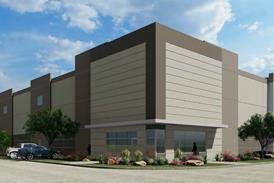


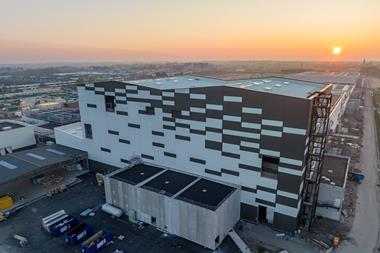
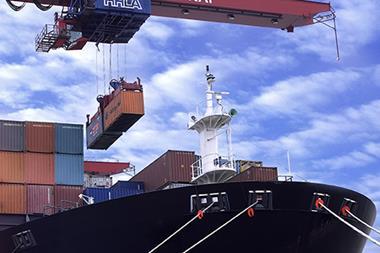







No comments yet